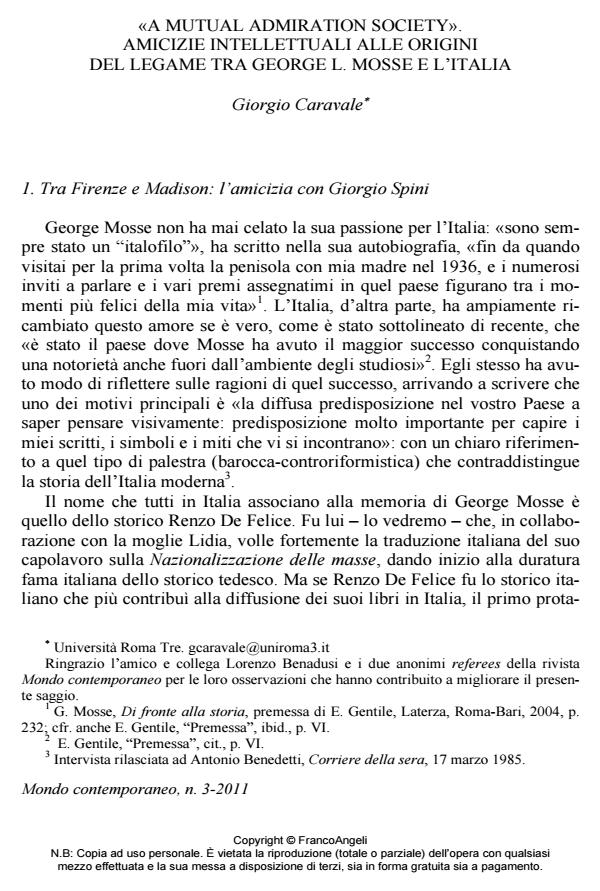"A Mutual Admiration Society". Intellectual Friendship at the Roots of the Link between George L. Mosse and Italy
Journal title MONDO CONTEMPORANEO
Author/s Giorgio Caravale
Publishing Year 2012 Issue 2011/3
Language Italian Pages 33 P. 79-111 File size 368 KB
DOI 10.3280/MON2011-003003
DOI is like a bar code for intellectual property: to have more infomation
click here
Below, you can see the article first page
If you want to buy this article in PDF format, you can do it, following the instructions to buy download credits

FrancoAngeli is member of Publishers International Linking Association, Inc (PILA), a not-for-profit association which run the CrossRef service enabling links to and from online scholarly content.
The essay illustrates George L. Mosse’s Italian intellectual network. Why his relationship with the Italy was so special to him and why Italy is perhaps the country that acclaimed the most his work? These pages answer to those questions analyzing Mosse’s admiration for Benedetto Croce and his fascination with Italian Baroque culture, his first Italian intellectual friendship with Giorgio Spini in the early sixties, his close liaison with the publisher Vito Laterza and of course his strong connection with the historian of fascism Renzo De Felice. In particular this «mutual admiration society», as it was defined, so important for understanding Mosse’s fortune in our country, is read through the filter of Delio Cantimori’s influence on his student De Felice, and through the rich epistolary of Michael Ledeen, young american Mosse’s student who came and worked with De Felice in Italy during the seventies. A few unpublished letters between Mosse and De Felice are published here for the first time in the appendix, together with other unpublished documents.
Keywords: George L. Mosse, Renzo De Felice, Giorgio Spini, Delio Cantimori, Michael Ledeen, Vito Laterza
Giorgio Caravale, "A mutual admiration society". Amicizie intellettuali alle origini del legame tra George L. Mosse e l’Italia in "MONDO CONTEMPORANEO" 3/2011, pp 79-111, DOI: 10.3280/MON2011-003003